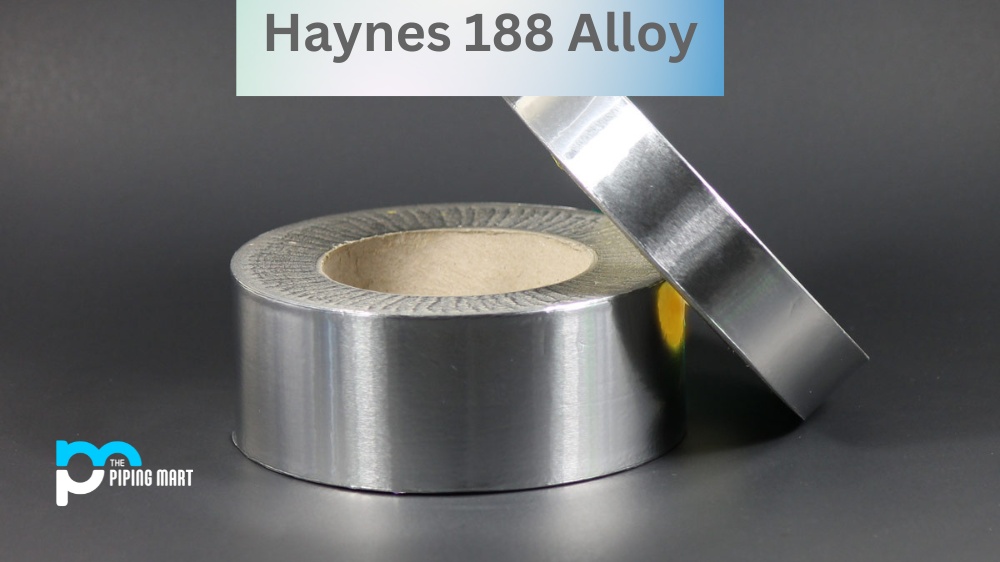Tantalum R05240 is one of the most versatile metals you may have never heard about. It has an impressive list of properties that make it suitable for various industrial applications. From its mechanical and physical properties to its corrosion resistance and heat treatment capabilities, tantalum R05240 is a material that commands attention from engineers and manufacturers alike. In this blog, we’ll dive deep into the world of this fascinating metal and explore its various properties and uses.
Tantalum R05240 Composition
Tantalum R05240 is an alloy of 97.5% tantalum and 2.5% tungsten. This combination of metals gives the alloy exceptional strength and hardness.
| Component Elements Properties | Metric | English | Comments |
|---|---|---|---|
| Niobium, Nb (Columbium, Cb) | 40 % | 40 % | |
| Tantalum, Ta | 60 % | 60 % | As balance |
Tantalum R05240 Mechanical Properties
This alloy has an impressive tensile strength of up to 130 ksi and a yield strength of 80 ksi. The alloy is also known for its ability to withstand extreme temperatures, making it ideal for high-temperature applications.
| Mechanical Properties | Metric | English | Comments |
|---|---|---|---|
| Tensile Strength | 290 MPa @Temperature 260 °C |
42000 psi @Temperature 500 °F |
Recrystallized |
| Tensile Strength, Ultimate | 275 – 310 MPa | 39900 – 45000 psi | |
| Tensile Strength, Yield | 193 – 207 MPa @Strain 0.200 % |
28000 – 30000 psi @Strain 0.200 % |
|
| Elongation at Break | 25 – 40 % | 25 – 40 % | |
| Modulus of Elasticity | 152 GPa | 22000 ksi |
Tantalum R05240 Physical Properties
Tantalum R05240 has a melting point of 2996 °C, which makes it one of the most heat-resistant metals known to man. Additionally, it has a density of 16.6 g/cm³, which is comparatively high. This makes it ideal for highly specific industries that need extremely durable materials.
Tantalum R05240 Uses
Tantalum R05240 is widely used in various applications. It produces electronic parts such as capacitors, resistors, and other components. It is also widely used in the medical industry for surgical implants, as tantalum is bio-compatible and does not react with body fluids. Furthermore, it is used in the aerospace and aircraft industry due to its exceptional tensile strength and corrosion resistance.
Tantalum R05240 Corrosion Resistance
Tantalum R05240 is highly corrosion-resistant to various chemicals such as hydrochloric acid, nitric acid, and sulfuric acid. This corrosion resistance makes tantalum R05240 highly useful in various industrial processes involving such chemicals.
Tantalum R05240 Heat Treatment
Heat treatment of tantalum R05240 can enhance its mechanical properties. Annealing can be done at temperatures ranging from 900°C to 1300°C, which improves the alloy’s ductility. Additionally, tantalum can be hardened through cold working, which involves changing the shape and size of the tantalum by hammering, bending, or rolling while keeping it below its recrystallization temperature.
Tantalum R05240 Machining
Tantalum R05240 can be difficult to machine due to its high density and hardness. However, machining techniques such as electrical discharge machining (EDM) can be used to machine tantalum parts effectively.
Tantalum R05240 Welding
Welding tantalum is challenging due to its high melting point, low thermal conductivity, and tendency to oxidize. However, advanced welding techniques can be used successfully, such as electron beam welding and gas tungsten arc welding.
Conclusion:
Tantalum R05240 is a rare and precious metal with exceptional properties, making it highly sought-after in multiple industrial applications. Its strength, hardness, heat, and corrosion resistance are highly useful in manufacturing high-performance components. Whether electronic components, surgical implants, or aircraft parts, tantalum R05240 is a metal that continues to find promising uses in various industries. Thus, the future seems bright, and the scope for growth is vast.




